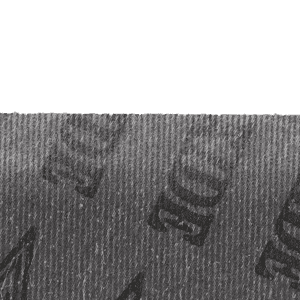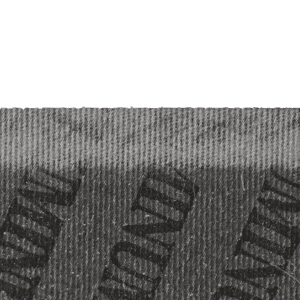The scuff of the belt
This is the first in a series of articles covering the various steps of the belt manufacturing process, and the measures ARC Abrasives, Inc. has taken to improve these processes. This article covers the first and most important step of the process, the scuff.
What is the scuff?
To make any abrasive belt, the two ends of the abrasive material must be joined together and spliced, and the splice must be able to withstand the high speeds and forces a belt will experience in use. A secure splice is vital to the success of the belt, preventing breakage, and ensuring the safety of the operators using the belt.
Creating a splice starts with the scuff. If one were to splice a belt without first scuffing the edge of the material, the tape and glue would be unable to properly join the material and the belt would break almost immediately. Scuffing helps the tape and glue stick to the belt by roughing up the backing of the abrasive material, raising microfibers and increasing the surface area for the tape and glue to adhere to. The more microfibers on the backing that are available for the tape and glue to attach to, the stronger the splice will be.
the scuff: too much, too little, and just right.
When scuffing the belt ends to make a splice, care must be taken to ensure a proper surface is created. If the material is scuffed too deep, the belt backing along the edge of the scuff can become compromised. A scuff too deep will thin and weaken the backing, increasing the likelihood of belt failure. A belt that has not been scuffed enough will leave a bonding surface unable to accept and attach to the glue and tape that is applied. this will also lead to belt failure. Finding the right balance for each material is key to making a successful splice.

An under-scuffed belt

A well-scuffed belt
How is arc abrasives working to maintain this balance?
Over the years, ARC Abrasives has been making significant investments into our belt line through the purchasing of new and improved equipment and through more rigorous training for our belt line operators.
In the past, the manufacturing process of an abrasive belt was extremely manual, with the operators requiring an immense amount of knowledge and precision for each belt type and size. This allowed the opportunity for human error, and even the most experienced belt line operators are not perfect.
Today, the belt line at ARC has been updated to automate the most crucial steps of the belt manufacturing process, including the scuff. Our updated equipment removes the opportunity for human error and can account for variations in the thickness of the material down to the nanometer. This ensures that we can maintain the delicate balance of the scuff consistently.
These improvements have also increased our belt manufacturing capacity while lowering the rejection rates from the rigorous quality testing that belts from each order are required to run through.
conclusion
Being in the abrasives industry for over 60 years, ARC Abrasives has a keen understanding of the belt manufacturing process and the importance of the scuff for performance and safety. We are constantly taking measures and making investments to improve the quality and consistency of our belts to better serve our customers.
Visit the contact page here on our website to order product samples and see the results of these improvements for yourself!

